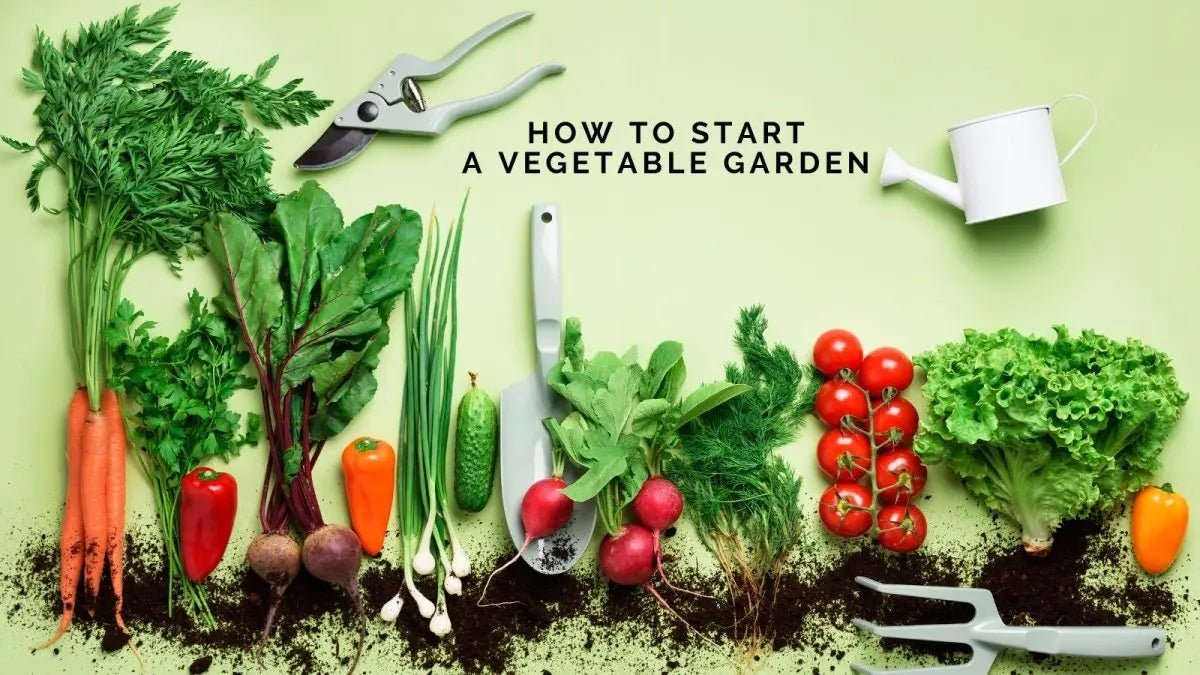
Gardening is a deeply rewarding hobby that allows you to connect with nature, find solace in the soil, and—best of all—enjoy fresh, homegrown produce right from your backyard.
If you’re a beginner, starting a vegetable garden might feel overwhelming, but with the right guidance, you’ll soon find yourself harvesting a bountiful crop.
Why Start a Vegetable Garden?
Imagine stepping outside your kitchen door, plucking a ripe tomato off the vine, or gathering fresh herbs for tonight’s dinner. Growing your own food means healthier meals, fewer trips to the grocery store, and a sustainable lifestyle. It’s also a wonderful way to reduce stress, improve mental well-being, and create a sense of accomplishment.
Step 1: Plan Your Garden Space
Before you start digging, it’s essential to plan your garden. Consider these factors:
Location, Location, Location: Choose a spot that receives at least 6-8 hours of sunlight daily. Most vegetables need full sun to thrive. The location should be relatively level and free of obstacles like tree roots or rocks.
Size Matters: As a beginner, start small. A 4x4-foot or 4x8-foot raised bed is perfect for beginners and will give you plenty of space without becoming unmanageable.
Soil Quality: Healthy soil is the foundation of a thriving garden. If you’re planting directly in the ground, consider testing your soil to understand its pH and nutrient content. For raised beds, use a mix of garden soil, compost, and peat moss or coconut coir.
Water Source: Ensure your garden is close to a water source. Regular watering is essential, especially in the early stages of growth.
Step 2: Prepare Your Garden Bed
Once you’ve chosen the perfect spot, it’s time to prep your garden bed:
Clear the Area: Remove any weeds, grass, or debris from the area. If you’re planting in a raised bed, lay down cardboard or newspaper at the bottom to prevent weeds from growing through.
Amend the Soil: If planting in the ground, mix in compost or aged manure to improve soil structure and add nutrients. This step helps the soil retain moisture and promotes healthy root development.
Create a Planting Layout: Decide which vegetables you want to grow and sketch a rough layout. Consider companion planting—pairing plants that benefit each other—to optimise growth.
Step 3: Choose the Best Vegetables for Beginners
As a novice gardener, it’s best to start with vegetables that are easy to grow, require minimal maintenance, and have a high success rate. Here are the top picks:
Lettuce and Leafy Greens are fast-growing, versatile, and can be harvested multiple times.
Varieties to Try: Romaine, Butterhead, Kale, and Spinach.
Growing Tips: Lettuce and greens prefer cooler temperatures, so plant them in early spring or fall. They can grow in partial shade and are perfect for containers or raised beds.
Radishes are super quick to mature (often within 30 days) and don’t take up much space.
Varieties to Try: Cherry Belle, French Breakfast, and White Icicle.
Growing Tips: Sow radish seeds directly in the garden. Thin seedlings to avoid overcrowding.
Tomatoes are delicious, versatile, and a garden staple.
Varieties to Try: Cherry Tomatoes (for small spaces), Beefsteak (for slicing), and Roma (for sauces).
Growing Tips: Plant tomatoes in a sunny spot. Provide support with stakes or cages as they grow.
Zucchini are high-yield with minimal effort. One or two plants can produce a significant harvest.
Varieties to Try: Black Beauty, Cocozelle, and Yellow Crookneck.
Growing Tips: Zucchini likes full sun and well-draining soil. Keep an eye out for pests like squash bugs.
Bush Beans are easy to grow, don’t require trellising, and improve soil fertility by fixing nitrogen.
Varieties to Try: Blue Lake, Contender, and Provider.
Growing Tips: Sow seeds directly after the last frost date. Harvest beans regularly to encourage more production.
Carrots are low-maintenance, sweet, and nutritious.
Varieties to Try: Nantes, Danvers, and Little Finger.
Growing Tips: Loose, sandy soil is best for straight, long carrots. Thin seedlings to allow enough space for root development.
Herbs (Basil, Parsley, and Chives) are perfect for beginners and can be grown in small spaces or containers.
Varieties to Try: Sweet Basil, Curly Parsley, and Garlic Chives.
Growing Tips: Plant herbs near your kitchen for easy access. Regular harvesting encourages bushier growth.
Step 4: Planting Your Vegetables
After selecting your vegetables, it’s time to plant:
Read Seed Packets: Seed packets provide vital information on planting depth, spacing, and days to maturity.
Follow the Frost Date: Make sure you know your area’s last frost date. Warm-season crops like tomatoes and beans shouldn’t be planted until after the danger of frost has passed.
Plant in Rows or Blocks: For a neat, organised garden, plant in rows or blocks, leaving enough space for walking and weeding.
Step 5: Maintain and Care for Your Garden
Water Regularly: Most vegetables need about an inch of water per week. Water deeply in the early morning to reduce evaporation and prevent disease.
Mulch: Apply a layer of mulch around plants to conserve moisture, regulate soil temperature, and suppress weeds.
Fertilise as Needed: Use a balanced fertiliser or compost tea every few weeks to provide essential nutrients.
Monitor for Pests: Keep an eye out for common garden pests like aphids, slugs, and caterpillars. Use organic pest control methods whenever possible.
Harvest Regularly: Harvesting encourages more production, especially for crops like beans, lettuce, and herbs.
Step 6: Enjoy the Harvest!
Starting a vegetable garden as a beginner is a journey filled with learning and experimentation. Don’t be discouraged if some crops don’t turn out as expected—gardening is a continual learning process.
Celebrate your successes, enjoy your fresh produce, and remember that the joy of gardening lies in the journey as much as the harvest.




















